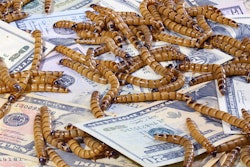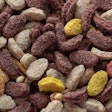
It’s amazing how, once a narrative grabs attention, especially in mainstream media, it can take on a life its own — one that may never seem to end even years after the fact.
Case in point: A study released in 2017 by Gregory Okin of the University of California Los Angeles, claiming that dog and cat foods accounted for nearly 25% of agriculture-related fossil fuel emissions in the U.S., is still being widely referenced as fact, including by publications such as the New York Times (NYT) just recently — eight years later. This, despite the research and its conclusions being questioned, even debunked, at the time and since.
When I see articles like the NYT one, I tend to shake my head and mutter under my breath; in this case, I also started to ponder why such information persists and morphs into what some might consider common knowledge. I think it’s because countering information and sources just don’t receive the same level of attention once the original perception takes hold, especially for one like this that touches on two hot buttons: love for pets and sustainability. If they seem in conflict, that apparent tension garners even more concern and hype. Then the entire concept starts to become urban legend.
Most protein in pet food is not human grade
The main flaw in Okin’s research was that he assumed the animal protein sources in pet foods are all fit for human consumption, with a corresponding environmental footprint. In reality, a high percentage of those proteins, along with other ingredients in pet diets, are byproducts of human food supply chains, often materials that are considered “waste” and, if not used in pet foods, would end up in landfills.
For example, 50% of livestock animals’ bodies are considered inedible by our culture, according to the North American Renderers Association; if those “leftovers” were not rendered into meat meals for pet food, along with fats and oils used in other product streams, they would fill up all available landfill space in four years.
In addition, the Institute for Feed Education and Research’s (IFEEDER) 2025 Pet Food Production and Ingredient Analysis showed that about 50% of pet food ingredients used in the U.S. qualify as “upcycled.” Besides animal protein byproducts, those include co-products from corn and yeast processing such as distillers grains and plant-based byproducts like tomato pomace and berry hulls.
Okin made other incorrect assumptions: that each of the first five ingredients in a pet food contributes equally by percentage, and that in combination, those five ingredients comprise the bulk of the mass of pet food in the U.S., according to Ryan Yamka, Ph.D., now vice president of R&D for the Farmer’s Dog. In debunking the study at the time, he commented: “Okin does acknowledge that the above assumptions are wrong and conservative; however, he proceeds anyway with his estimations of the environmental impact of dogs and cats.”
Yamka also mentioned and linked to previous research by Swanson et al. that provided a worthwhile review of sustainability in pet food, including the environmental impact of human-grade ingredients in pet food, especially human-grade meat, and that for other types of proteins and ingredients. (Yamka even credited Okin for bringing attention to sustainability concerns over human-grade meat.)
Unfortunately, since Okin’s research was published and extensively quoted and referenced, I’ve rarely seen the Swanson paper mentioned. It certainly didn’t appear in the NYT article posted on July 29, 2025.
Steak is not equivalent to meat meal
To be fair to Rachel Nuwer, author of that article, she covered several other ways outside of their diets that pets can affect their environments. And, concerning pet food, she didn’t just cite the Okin study but also a global one from 2020 by Alexander et al. However, she neglected to mention that the 2020 study looked at animal byproducts (ABP) in pet foods, completely missing the distinction between those and proteins intended or fit for human consumption, which was how Okin characterized pet food protein sources.
She also didn’t include the fact that the 2020 study pointed out the flaws in the previous research: “Existing pet food impact studies (Okin and Crowther, 2017; Su and Martens, 2018; Su et al., 2018) indiscriminately assign environmental impact equally to all animal-derived product mass, implying 1 kg of prime steak has the equivalent impact of 1 kg of ABP. Conversely to the assumption of zero impact, this greatly over-estimates the environmental impacts of most pet foods.”
Such omissions are exactly how misleading and even inaccurate information attains the level of “fact” for many people. In some ways, it even calls to mind how the DCM controversy from several years ago demonized all grain-free pet foods, with little data to back up the concerns over such foods and their supposed, unproven link to dilated cardiomyopathy in dogs. The Food and Drug Administration’s (FDA) leap to immediately investigate — and announce it — without any supporting data led to a misinformation-filled media frenzy that still has legs today.
The good news is, the DCM debacle also offers insights into how the pet food industry can respond to the proliferation of misleading information. Since the fallout from that situation, studies on grain-free foods and pulses (one of the main types of ingredients in them) have shown no causative link between them and canine DCM. Even better, that research has been reported and included in other coverage.
While the situation with inaccurate information on the environmental impact of pet foods does not come close to approaching the level of DCM, more research, well distributed and promoted, would certainly help.

















